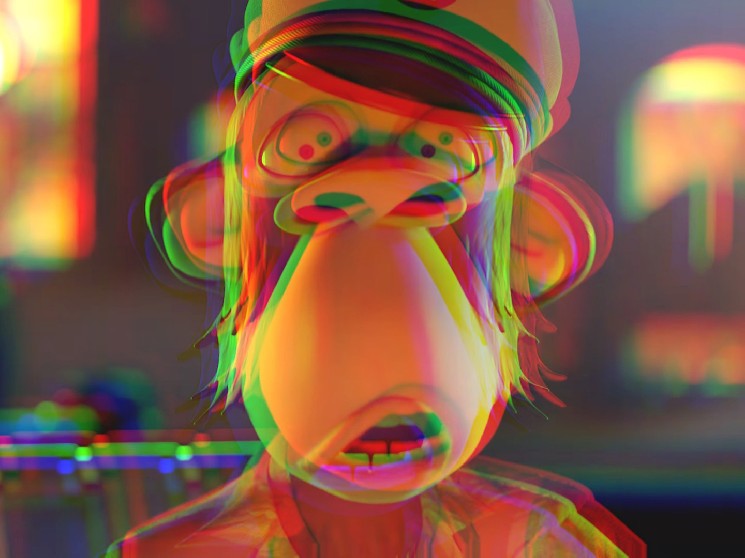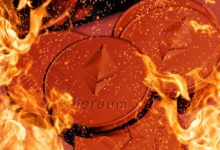It’s Been a Year Since NFTs Exploded. Where Are We Headed?

Non-fungible tokens (NFTs) exploded in 2021, thanks to soaring cryptocurrency prices that encouraged new traders to explore the space. Eye-watering NFT sales, like «Beeple’s Everydays: the First 5000 Days,» added to the hype, and traders felt empowered to flip NFTs for profit due to favorable market conditions. Ethereum, which powered most early NFT projects, was thriving and the price of ETH, the blockchain’s native cryptocurrency, was hovering around $4,000 just a year ago.
Fast forward to today and the environment has changed completely.
This article is part of Crypto 2023.
Gone are the casual traders and deluge of NFT projects from Web2 brands looking to capitalize on what they saw as a mass market trend. An extended crypto winter has slashed the prices of cryptocurrencies from their former highs, leaving previously enthusiastic traders with scraps of their former earnings. At the time of publishing, the price of ETH is down to about $1,200.
According to data from Web3 developer backend Alchemy published in October, NFT trading volume fell 88% since the third quarter of last year. Disasters for the crypto industry – like the collapse of crypto payments ecosystem Terra, crypto lender Celsius, crypto hedge fund Three Arrows Capital and most recently Sam Bankman-Fried’s FTX empire – have made an already bad situation worse.
Still, all hope is not lost for passionate NFT hodlers, who may have dwindled in numbers but have grown in loyalty. Data from Alchemy shows that the number of smart contracts deployed on Ethereum grew by over 40% since the end of the first quarter, highlighting long-term conviction in the digital asset space and continued development of Web3 projects despite frosty conditions.
See also: NFTs Are Securities and It’s Great | Crypto 2023
There’s still more to come from NFTs. From utility to community building, here are just a few trends that will continue to define the space in 2023.
Commitment to community
The Word of the Year, according to the publisher behind the Oxford English Dictionary, was “goblin mode.”
The popular dictionary defines this word as “a type of behavior which is unapologetically self-indulgent, lazy, slovenly, or greedy, typically in a way that rejects social norms or expectations.”
Nothing exemplified going “goblin mode” in 2022 more than the surprise success of the NFT collection Goblintown.
The profile-picture (PFP) collection features an eccentric line-up of memefied goblin characters, and the name of the collection is a colloquial nod to the somewhat disheveled state of the crypto market. The entire collection was free to mint and seemed to have emerged out of the blue.
By May 2022, when the project was released, ETH had lost a significant percentage of its 2021 value, dropping to about $2,000. Despite this, the project made 3,800 ETH (about $7 million) after launch, and in June, its floor price soared to a high of 7.3 ETH, (about $13,000 at the time).
Alex Taub, the co-founder of Truth Labs, the Web3 creator collective behind Goblintown, told CoinDesk that a large contributor to the collection’s success was the sense of community it fostered with its artwork and narrative.
“The concept was that everyone was ‘going down to Goblintown’ because they were losing money.” He called the artwork “ugly but well done,” which resonated with a community of collectors. “You can do anything right if you have great compelling characters and story,” Taub said.
He predicted that NFT collections that stand a chance at success in 2023 will be those that “cultivate community” by focusing on smaller collections and narrative storytelling.
“You’ll still have winners here and there,” Taub said, referencing one-off collections that soared during the hype period of 2022. “But for the most part, it’s high-quality effort [to build community] that will be rewarded.”
A focus on long-term utility
Other projects found success this year by embedding NFTs with utility, which means real-world use cases and value beyond just being digital collectibles. Utility for NFT holders can come in the form of land deeds and home ownership titles, or be linked to exclusive experiences like concerts, restaurant bookings, parties and more.
Matt Medved, CEO of digital asset publication NFTNow, told CoinDesk that in this past year we’ve started to see new use cases for non-fungible tokens that will likely continue to in 2023.
“Utility-based projects can take a lot of different forms, but they are going to really tap into human behavior, human psychology, human desires and different communities,” Medved said. “They are going to be innovating at the forefront of what [blockchain] technology can really offer.”
NFT collective PROOF released its NFT collection of pixelated owls called Moonbirds in April, which clocked in $200 million in primary and secondary sales within two days of launching. “Each Moonbird unlocks private club membership and additional benefits the longer you hold them,” the project explains on its website, coining the term “nesting” for holders that lock up their assets long-term.
Justin Mezzell, co-founder and chief product officer of PROOF explained that building a passionate collector community and incentivizing long-term holding has contributed to the project’s success and is part of its plan for 2023.
“We want community tooling to exist as a product,” Mezzell said. “We are interested in building a socialized platform to figure out not only how Moonbirds meet one another, how to discuss the things that they’re excited about, but ultimately, how do we bring in other people into the conversation as well.”
Building authentic Web3 strategies
Web3 was certainly the buzzword of 2022, and it felt, for a time, that every brand was eager to integrate NFTs or the metaverse into their business strategy.
Maja Vujinovic, managing director of Web3 investment firm OGroupLLC and NFT investor, told CoinDesk that rather than looking at pre-existing goods or services and simply putting them on-chain as a performative gesture, it’s important to analyze what putting these assets on-chain means for consumers and the project’s long-term growth.
See also: Are NFTs Rendering Art Meaningless? | Opinion
She noted that while the Starbucks Odyssey NFT rewards program, which recently launched a closed beta test, is a big move for the national coffee chain that may help spark mass adoption, she questioned the intrinsic value of putting the loyalty stamp on-chain, rather than sticking with its existing rewards strategy.
Vujinovic said that future Web3 activations must incorporate “creativity on a human level,” rather than acting as a corporate marketing strategy.
NFT projects as creative ecosystems
As the state of the crypto market remains uncertain in the year to come, projects need to work smarter – not harder – to succeed.
Many successful projects have used intellectual property (IP) licensing agreements to create new revenue streams for holders and accelerate the growth of their brands.
Yuga Labs, the NFT startup behind Bored Ape Yacht Club, has released the IP rights of all of its projects, including CryptoPunks and Meebits, to holders, allowing their NFT characters to be used on branding for food trucks, TV shows, music groups and more.
Other projects, like Moonbirds and Goblintown, have embraced the CC0 license, which essentially puts the use of their characters into the public domain, even for commercial purposes.
See also: Empire of the Bored Apes | Most Influential 2022
NFT creators are also looking beyond art and are building entire worlds around their characters. In 2023, Yuga Labs is shifting its focus toward building The Otherside, a gamified, narrative-driven metaverse initiative that allows users to turn their NFTs into playable characters.
“We’re leading the way for a new generation of builders and it’s really exciting,” a Yuga Labs spokesperson told CoinDesk. “Otherside is a massively ambitious project that requires a ton of innovation and all eyes are on us to get that right.”
Given the pace at which the NFT market moves, it’s certain that new trends will emerge in 2023. Use cases for NFTs will continue to expand and builders will create new tools for experimentation and creative collaboration. While 2021 was all about hype, 2022 was about introspection and revisiting why builders turned to Web3 in the first place. And as we approach a new year, one thing is clear: the relatively nascent NFT space still has room to grow.






 Bitcoin
Bitcoin  Ethereum
Ethereum  Tether
Tether  USDC
USDC  TRON
TRON  Dogecoin
Dogecoin  Cardano
Cardano  Bitcoin Cash
Bitcoin Cash  Chainlink
Chainlink  LEO Token
LEO Token  Stellar
Stellar  Litecoin
Litecoin  Hedera
Hedera  Monero
Monero  Dai
Dai  OKB
OKB  Cronos
Cronos  Ethereum Classic
Ethereum Classic  Gate
Gate  Cosmos Hub
Cosmos Hub  VeChain
VeChain  Algorand
Algorand  KuCoin
KuCoin  Stacks
Stacks  Tether Gold
Tether Gold  Theta Network
Theta Network  Zcash
Zcash  IOTA
IOTA  Tezos
Tezos  TrueUSD
TrueUSD  NEO
NEO  Polygon
Polygon  Decred
Decred  Dash
Dash  Ravencoin
Ravencoin  Qtum
Qtum  Zilliqa
Zilliqa  Synthetix Network
Synthetix Network  Basic Attention
Basic Attention  0x Protocol
0x Protocol  Siacoin
Siacoin  Holo
Holo  DigiByte
DigiByte  Nano
Nano  Enjin Coin
Enjin Coin  Ontology
Ontology  Status
Status  Hive
Hive  Waves
Waves  Lisk
Lisk  Pax Dollar
Pax Dollar  Steem
Steem  BUSD
BUSD  Numeraire
Numeraire  NEM
NEM  Huobi
Huobi  OMG Network
OMG Network  Bitcoin Gold
Bitcoin Gold  Ren
Ren  Augur
Augur  HUSD
HUSD